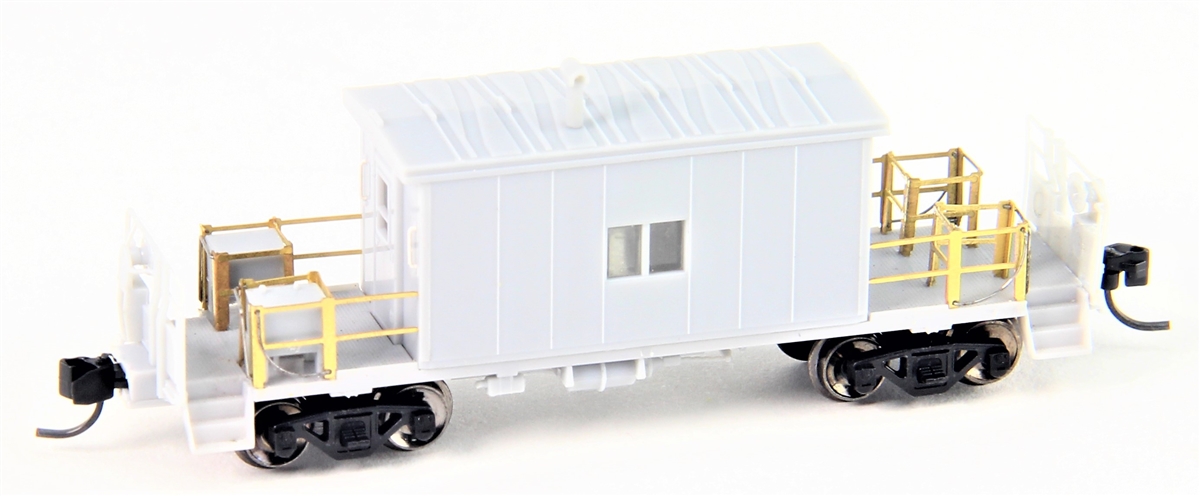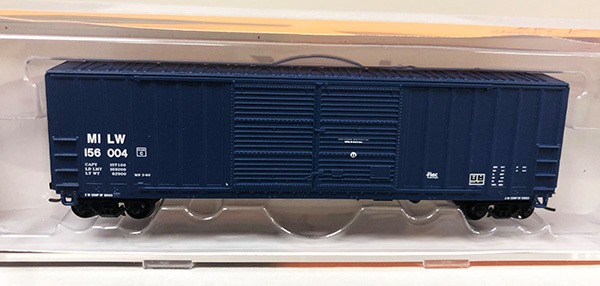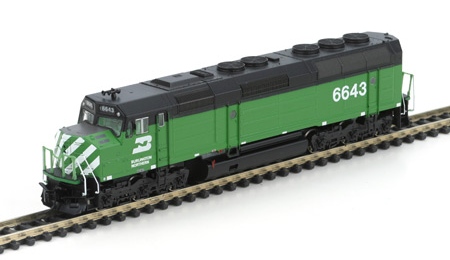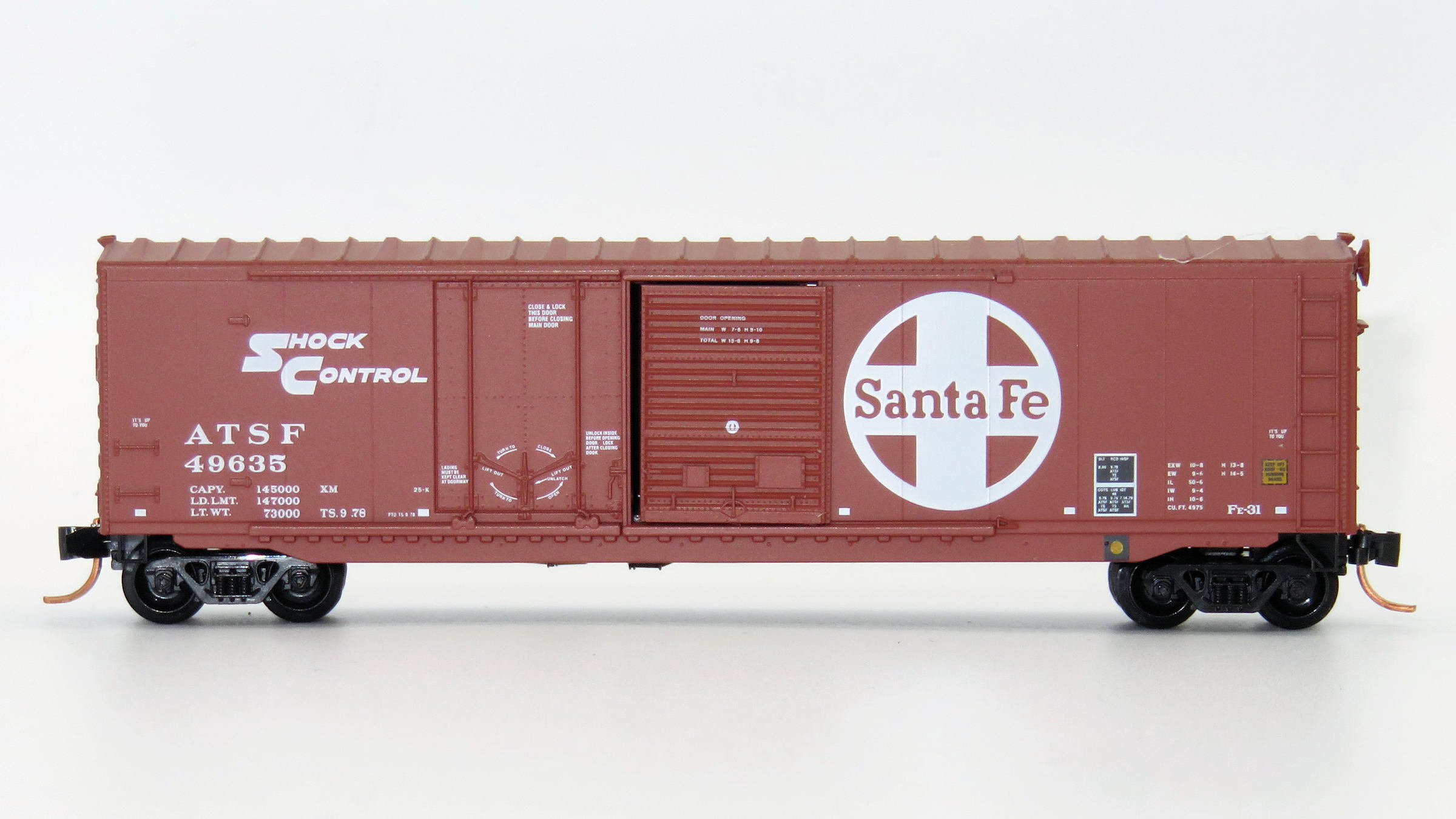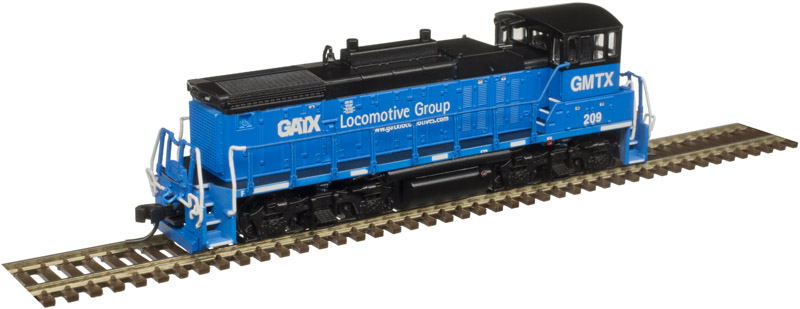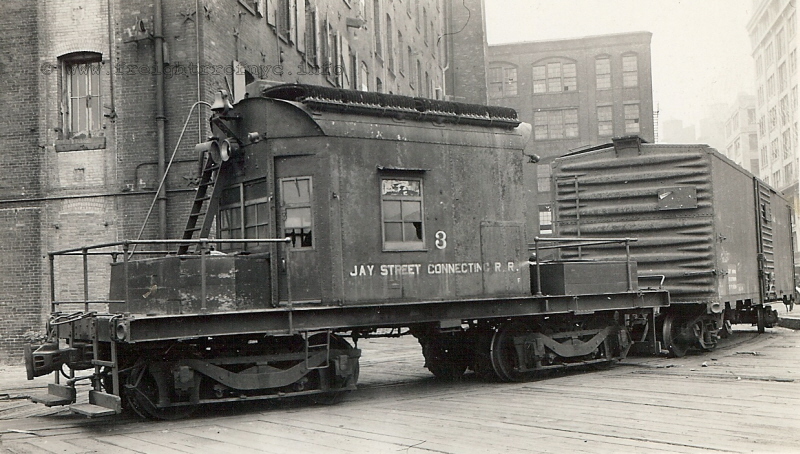Model Information: This model features: Fox Valley Metal wheels and
Wire grabs and cut levers.
This short body bay window caboose design was developed by International Car and MoPac in the 1970s. Several other railroads used very similar cars. These were assigned to road service and were NOT transfer cabooses.
This short body bay window caboose design was developed by International Car and MoPac in the 1970s. Several other railroads used very similar cars. These were assigned to road service and were NOT transfer cabooses.
Prototype History: A transfer caboose looks more like a flat car with a shed bolted to the middle of it than it does a standard caboose. It is used in transfer service between rail yards or short switching runs, and as such, lacks sleeping, cooking or restroom facilities. The ends of a transfer caboose are left open, with safety railings surrounding the area between the crew compartment and the end of the car.
A recent variation on the transfer caboose is the "pushing" or "shoving" platform. It can be any railcar where a brakeman can safely ride for some distance to help the engineer with visibility at the other end of the train. Flatcars and covered hoppers have been used for this purpose, but often the pushing platform is a caboose that has had its windows covered and welded shut and permanently locked doors. CSX uses former Louisville & Nashville short bay window cabooses and former Conrail waycars as pushing platforms.
From Wikipedia
A recent variation on the transfer caboose is the "pushing" or "shoving" platform. It can be any railcar where a brakeman can safely ride for some distance to help the engineer with visibility at the other end of the train. Flatcars and covered hoppers have been used for this purpose, but often the pushing platform is a caboose that has had its windows covered and welded shut and permanently locked doors. CSX uses former Louisville & Nashville short bay window cabooses and former Conrail waycars as pushing platforms.
From Wikipedia
Road Name History:  Although they may be molded in color, unpainted and unlettered, undecorated products are marketed to modelers who seek to custom decorate their models for private roads and/or road and/or company names that were not commercially produced by any of the major manufacturers.
Although they may be molded in color, unpainted and unlettered, undecorated products are marketed to modelers who seek to custom decorate their models for private roads and/or road and/or company names that were not commercially produced by any of the major manufacturers.
Undecorated models are frequently also unassembled or only partially assembled and required modelers to be comfortable with glue, paint and sometimes solder in order to prepare their models for display. Materials for these models can vary but often include plastic, pewter and resin. Models may or may not come with decals or other decorations such as plastic signage, railings and ladders to enhance the appearance of the final product.

Undecorated models are frequently also unassembled or only partially assembled and required modelers to be comfortable with glue, paint and sometimes solder in order to prepare their models for display. Materials for these models can vary but often include plastic, pewter and resin. Models may or may not come with decals or other decorations such as plastic signage, railings and ladders to enhance the appearance of the final product.
Brand/Importer Information: Bluford Shops began in 2007 as a side project of two model railroad industry veterans, Craig Ross and Steve Rodgers. They saw a gap between road names available on N scale locomotives but not available on cabooses. They commissioned special runs of Atlas cabooses in Atlantic Coast Line, Central of Georgia, Monon, Boston & Maine and Southern plus runs on Grand Trunk Western and Central Vermont on the MDC wooden cabooses. While these were in process, they began to develop their first all new tooling project, 86' Auto Parts Boxcars in double door and quad door editions in N scale. By January of 2008, Bluford Shops became a full time venture. Along with additional N scale freight cars and their own tooling for new cabooses, they have brought their own caboose line to HO scale. They also have their popular Cornfields in both HO and N. The future looks bright as they continue to develop new products for your railroad.
The town of Bluford in southern Illinois featured a small yard on Illinois Central's Edgewood Cutoff (currently part of CN.) The yard included a roundhouse, concrete coaling tower (which still stands) and large ice house. Reefer trains running between the Gulf Coast and Chicago were re-iced in Bluford. Things are more quiet now in Bluford with the remaining tracks in the yard used to stage hoppers for mines to the south and store covered hoppers. Intersecting the IC line in Bluford is Southern Railway's (currently NS) line between Louisville and St. Louis. Traffic on this single track line remains relatively heavy.
The town of Bluford in southern Illinois featured a small yard on Illinois Central's Edgewood Cutoff (currently part of CN.) The yard included a roundhouse, concrete coaling tower (which still stands) and large ice house. Reefer trains running between the Gulf Coast and Chicago were re-iced in Bluford. Things are more quiet now in Bluford with the remaining tracks in the yard used to stage hoppers for mines to the south and store covered hoppers. Intersecting the IC line in Bluford is Southern Railway's (currently NS) line between Louisville and St. Louis. Traffic on this single track line remains relatively heavy.
Item created by: gdm on 2017-11-22 12:59:52. Last edited by gdm on 2021-03-03 17:04:52
If you see errors or missing data in this entry, please feel free to log in and edit it. Anyone with a Gmail account can log in instantly.
If you see errors or missing data in this entry, please feel free to log in and edit it. Anyone with a Gmail account can log in instantly.


